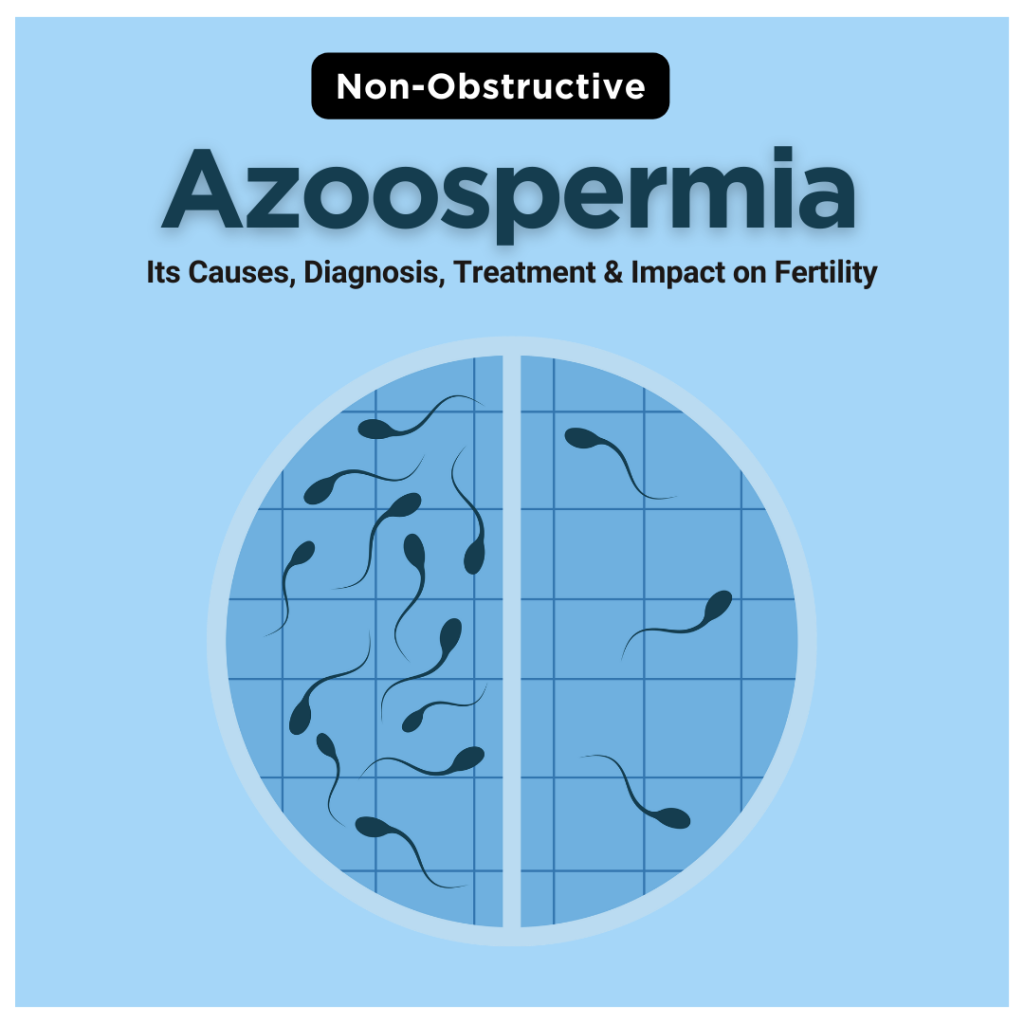Non-obstructive azoospermia (NOA) is a condition characterized by the absence of sperm in the ejaculate due to problems with sperm production rather than a physical blockage. It is a form of male infertility that poses challenges for couples seeking to conceive. With Gaudium IVF, the best IVF Centre in Mumbai, understanding the causes, diagnosis, and potential treatments for non-obstructive azoospermia is crucial for individuals facing this condition.

Causes:
NOA is often associated with disruptions in sperm production within the testicles. Various factors can contribute to this impairment, including genetic factors, hormonal imbalances, testicular injury, or exposure to environmental toxins. Genetic abnormalities, such as Klinefelter syndrome or Y-chromosomal microdeletions, are commonly linked to non-obstructive azoospermia. Hormonal imbalances involving the pituitary and hypothalamus can also affect the production of sperm.
Diagnosis:
Diagnosing non-obstructive azoospermia involves a comprehensive evaluation of the male reproductive system. Initial assessments may include a thorough medical history, physical examination, and semen analysis. In cases of NOA, semen analysis reveals an absence of sperm. Further investigations, such as hormonal tests and genetic screening, are often conducted to identify underlying causes. Testicular biopsy is another diagnostic tool, providing direct examination of the testicular tissue to assess sperm production and identify potential obstructions.
Impact on Fertility:
Non-obstructive azoospermia poses a significant challenge for couples trying to conceive naturally. Since sperm is absent in the ejaculate, the conventional method of assisted reproduction, such as in vitro fertilization (IVF), cannot be directly employed. Instead, specialized techniques like testicular sperm extraction (TESE) or microdissection TESE (micro-TESE) are utilized to retrieve sperm directly from the testicles. Once retrieved, the sperm can be used in conjunction with assisted reproductive technologies to facilitate conception.
Treatment Options:
The treatment approach for non-obstructive azoospermia depends on the underlying cause and the individual’s overall health. In cases where a reversible cause is identified, addressing the underlying issue may improve sperm production. However, for many individuals with NOA, the condition is often irreversible, requiring assisted reproductive technologies.
TESE and micro-TESE are common procedures for obtaining sperm from the testicles. Micro-TESE is a more advanced and precise technique that involves the use of an operating microscope to identify areas with active sperm production, increasing the chances of successful sperm retrieval. Once sperm is obtained, it can be used in combination with intracytoplasmic sperm injection (ICSI) during IVF.
Emotional and Psychological Impact:
Dealing with non-obstructive azoospermia can have a profound emotional and psychological impact on individuals and couples. The inability to conceive naturally may lead to feelings of frustration, sadness, and stress. Seeking support from the best Infertility clinic in Mumbai, counselors, or support groups can be beneficial in navigating the emotional aspects of infertility.
In conclusion, non-obstructive azoospermia presents a complex challenge for individuals and couples desiring to build a family. Understanding the causes, undergoing thorough diagnostic evaluations, and exploring appropriate treatment options are essential steps in managing this condition. Advances in assisted reproductive technologies continue to offer hope and possibilities for those facing non-obstructive azoospermia, providing avenues for achieving parenthood despite the associated challenges.

Leave a comment